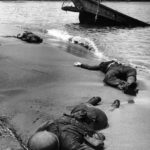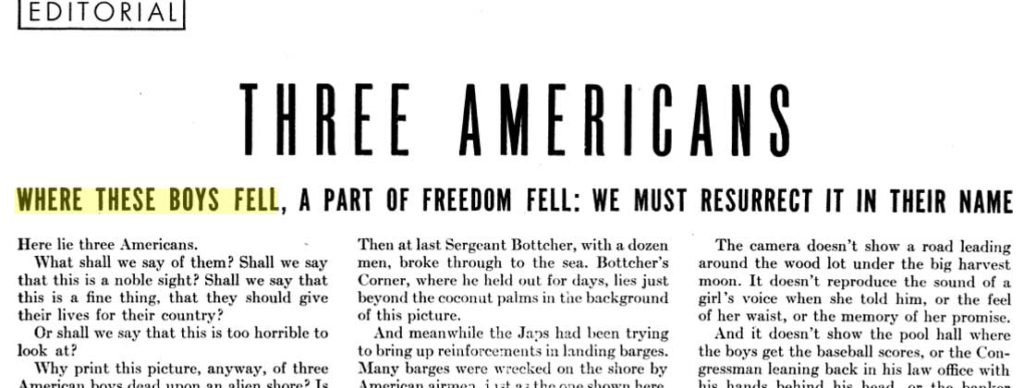 A Picture Too Far: Buna Beach and Censorship
A Picture Too Far: Buna Beach and Censorship
When American military censors received the first photographs of dead Americans at Buna Beach, they worried that publication would be too upsetting for the general public. The photos were censored.
President Franklin Delano Roosevelt finally approved publication—several months later.
Time/Life photographer George Strock snapped this picture at Buna Beach (a.k.a. Maggot Beach), in Papua, New Guinea in March 1943.
Photos of dead American soldiers had not been published before, and military censors were afraid that such graphic, disturbing images would be demoralizing. Publication was denied. But Life magazine executives kept making its case, and eventually they prevailed.
But even when the censorship was lifted, the issue was still so hot that the magazine editors thought it prudent to mount a defence. With the photograph, they also published a long explanatory note (click here or on the image below for the full Time/Life article):
The Life editorial opens by declaring: “Here lie three Americans,” and then justifies its publication by noting that “we think that occasional pictures of Americans who fall in action should be printed. The job of men like Strock is to bring the war back to us, so that we who are thousands of miles removed from the dangers and the smell of death may know what is at stake.”
And the job of Harvard-educated Time/Life executive Addison Beecher Colvin (ABC) Whipple (1918-2013) was to fight censorship that was dubious or no longer justified.
His obituary in the New York Times notes that “he counted among his proudest achievements the role of tenacious young intermediary in a fight by Life magazine against the military censorship of a single photograph during World War II — a fight that went all the way to the White House. ‘I went from Army captain to major to colonel to general,’ he recalled in a memoir written for his family, ‘until I wound up in the office of an assistant secretary of the Air Corps, who decided, ‘This has to go to the White House.’ ‘”
Worried that Americans were getting “complacent,” President Roosevelt authorized publication.
In an earlier incident, photographer Strock had been an unwitting participant as well as chronicler of the war in the Pacific - a participation that nearly killed him.###
